This article is written by Adhila Muhammed Arif and further updated by Adv. Devshree Dangi. It seeks to explain what a constitution is and its relevance in the modern-day world. It also describes the objectives of a Constitution. It further analyses the Constitutions of various nations and the effect of technology on the Constitution.
Table of Contents
Introduction
In the words of B.R. Ambedkar, “Constitution is not a mere lawyer’s document; it is a vehicle of life, and its spirit is always the spirit of age.” The presence of a Constitution has become extremely relevant in the modern-day world. It is extremely rare to find a country, particularly a democratic one, that functions without a Constitution. In every country, the interests of the citizens must always be given their due weight and protected from the arbitrary actions of those in power. A country must have its sovereignty intact to have political stability. That is, the relationship between the states and the subjects and also among the subjects, and the subjects should be properly defined. A constitution is essentially a tool to ensure the political stability of a state.
What is a Constitution
A Constitution is essentially the aggregate of the basic principles and laws of a political community, which is either a nation or a state, that determines the powers and duties of its government and the rights guaranteed to its citizens. It determines the structure and operation of government bodies and the political principles of the system. According to Lord Bryce, “the Constitution of a state or a nation consists of laws or rules that determine the form of its government and respective rights and duties of it towards the citizens and citizens towards the government.” Generally, all other laws are subordinate to the Constitution. That is, all other laws must conform with the Constitution to be valid.
When a government is fully operating and limited according to the Constitution, we could say that the system of that political society is constitutional. The concept of a government limited by a Constitution is called Constitutionalism. Constitutional systems are not always necessarily democratic, as even non-democratic nations can have their Constitutions and abide by them. A political system that is non-democratic but practises constitutionalism is called Constitutional oligarchy.
History of Constitutions
The idea of having a Constitution, a supreme law establishing the state and governance system, dates back to earlier periods. Nevertheless, the idea of laws and government was already developed in ancient Greece and Rome, though the notion of the Constitution as a written document appeared only in later centuries. The United States Constitution adopted in 1787 is often cited as a defining document of progress in this process. It also set the system of a federal government and a system of checks and balances and came up with ideas such as federalism and judiciary. Due to this, other nations followed the success of the US Constitution in adopting written Constitutions. India, a large and multicultural country, is another example. Indeed, its Constitution, formulated in 1950, is one of the longestt and most exhaustive in the world. It incorporates some aspects of other systems, such as the British parliamentary system, America’s federal system, and Ireland’s Directive Principles of State Policy. The modern Constitution contains provisions that define the organisation of the state, the rights of citizens, and the country’s fundamentals. While these documents vary widely in their specific provisions, they all share a common goal: that they will offer directions for justified and appropriate management. That is why the Constitutions of countries such as South Africa, Canada, and Germany are considered to be very effective, as they include a wide range of human rights and also focuses on the social and economic differences between people.
Objectives of a Constitution
To lay down the basic structure of government
A Constitution is the framework within which a nation is to be governed. The Constitution plays a key role in explaining the framework of government and demarcating the powers of various arms and branches of government, such as the parliament, presidency, and judicial system. It also outlines the status of the central government and how it can be connected to other sub-national segments, like states or provinces. It helps to prevent the accumulation of power in one place and for a clearer definition of competencies and jurisdictions.
To safeguard one’s rights and freedom
The protection of rights and freedoms is one of the most vital roles that a Constitution plays. It protects basic civil liberties such as freedom of speech and religion, association, and equal protection. They also serve as a barrier against state excesses and prevent unfair treatment of individuals and groups. Thus, when these rights are incorporated into the Constitution, they cannot easily be violated since they are constitutionally protected.
To ensure that everyone gets justice and equal rights are granted
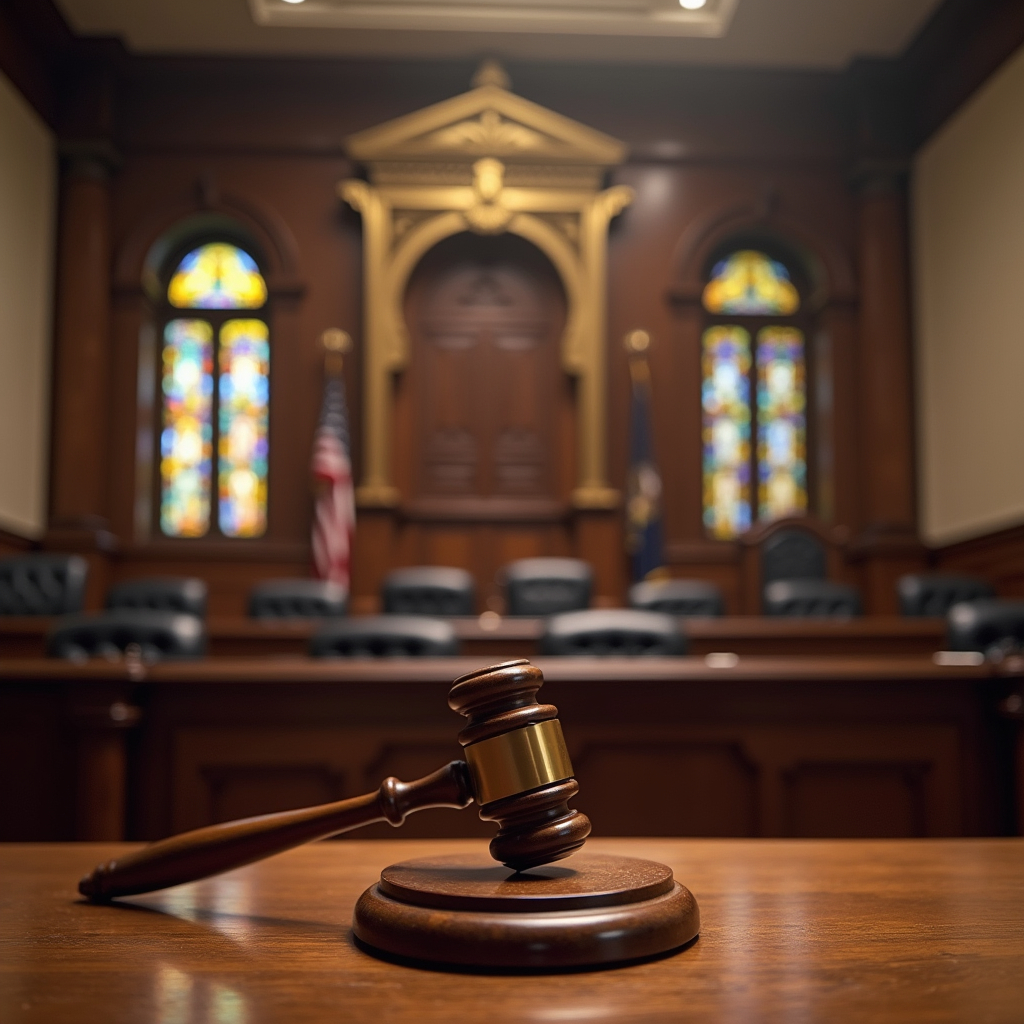
Taking the concepts of the Constitution to a supreme level is a means of establishing a fair society. It also protects the rights of all citizens by ensuring that they are all treated equally without discrimination. It sets out the primary principles of due process and the rule of law and provides a formal basis for equal access to justice. Also, it prescribes certain affirmative action or other things meant to remedy caste discrimination and injustices in society and infringement of fundamental rights of others.
To establish a foundation for the central and state laws
The Constitution works as the framework within which all other laws are enacted. It defines the framework within which the legislature can make laws. The judiciary can declare any law that conflicts with the Constitution to be unconstitutional. This signifies that all laws are aligned to the foundational principles and governance values contained in the Constitution.
To create a stable political environment and limits
It is considered that a well-constructed Constitution helps to maintain political stability because it establishes the framework of political competition. It provides for the means of transfer of power in a peaceful manner, ensures that authorities do not overpower other authorities, and contains methods for conflict solutions. It minimises the possibilities of political crises and changes since it offers a consistent guide on governance. Moreover, it sets checks and balances in the powers of the government by limiting its authority.
Types of Constitution
The following are some of the different categories by which constitutions may be classified:
Written and unwritten
A Constitution is usually codified in a single document or in different documents that can be collectively called the Constitution. Most Constitutions in the world are written, or codified in a single document. The Indian Constitution is a written constitution, i.e., it is codified into a single document. These are formal written documents that comprise the frameworks of the nation’s central laws, forms of government, and legal authorities for the citizens of that country. Some of the other countries with a written Constitution are the United States, France, and Germany. Unwritten Constitutions are not written down, and therefore they are not compiled in a single document. The rights, on the other hand, are dynamic and are not set in stone but rather develop over time through precedents, culture, usage, case laws, and statutes. Although these principles are not written, they are regarded as constitutional since they cover the governance of the country.
Some nations have unwritten or uncodified Constitutions, for instance, the Constitution of the United Kingdom. The United Kingdom has long been regarded as the world’s best example of a country with an uncodified Constitution. In the United Kingdom, historical constitutional documents, judicial precedents of constitutional significance, parliamentary statutes of constitutional status, and constitutional customs and conventions are what collectively represent its Constitution. Other countries that partly have features of the unwritten constitutions include New Zealand, Israel, and Saudi Arabia. However, it must be stressed that even the existence of the written Constitution in the majority of countries is combined with components of the unwritten constitutional tradition. For instance, the political parties and their functions concerning governance, while not spelt out in the Constitution are now considered critical ingredients of many political systems. On the other hand, some of these countries may not fully have a written Constitution but then, they will have some laws or some documents that set down specific parts of their constitutional system.
Rigid and flexible
Rigid Constitutions are extremely difficult to amend, while flexible Constitutions are not. The amendment procedure for rigid Constitutions is not the same as amending an ordinary law. Constitutions that are difficult to amend are said to be rigid, while those that can be amended easily are said to be flexible. The rigid Constitution is challenging to amend as seen in the United States and India and has special provisions for altering its provisions, thus offering protection of fundamental rights. On the other hand, flexible Constitutions which are illustrated by the United Kingdom, can be altered through the legislative procedures and hence can be changed to fit the current evolving times. However, most of the Constitutions, including the Indian Constitution, are considered to be balanced between both flexibility and rigidity, that is while insulating the fundamental rights, the amendments are allowed to be made to infer that the ideal Constitution is a blend of both features. The constitutional amendment procedure in India, though separate, is not too hard. It simply requires a two-thirds majority of all the votes in the parliament.
Unitary and federal
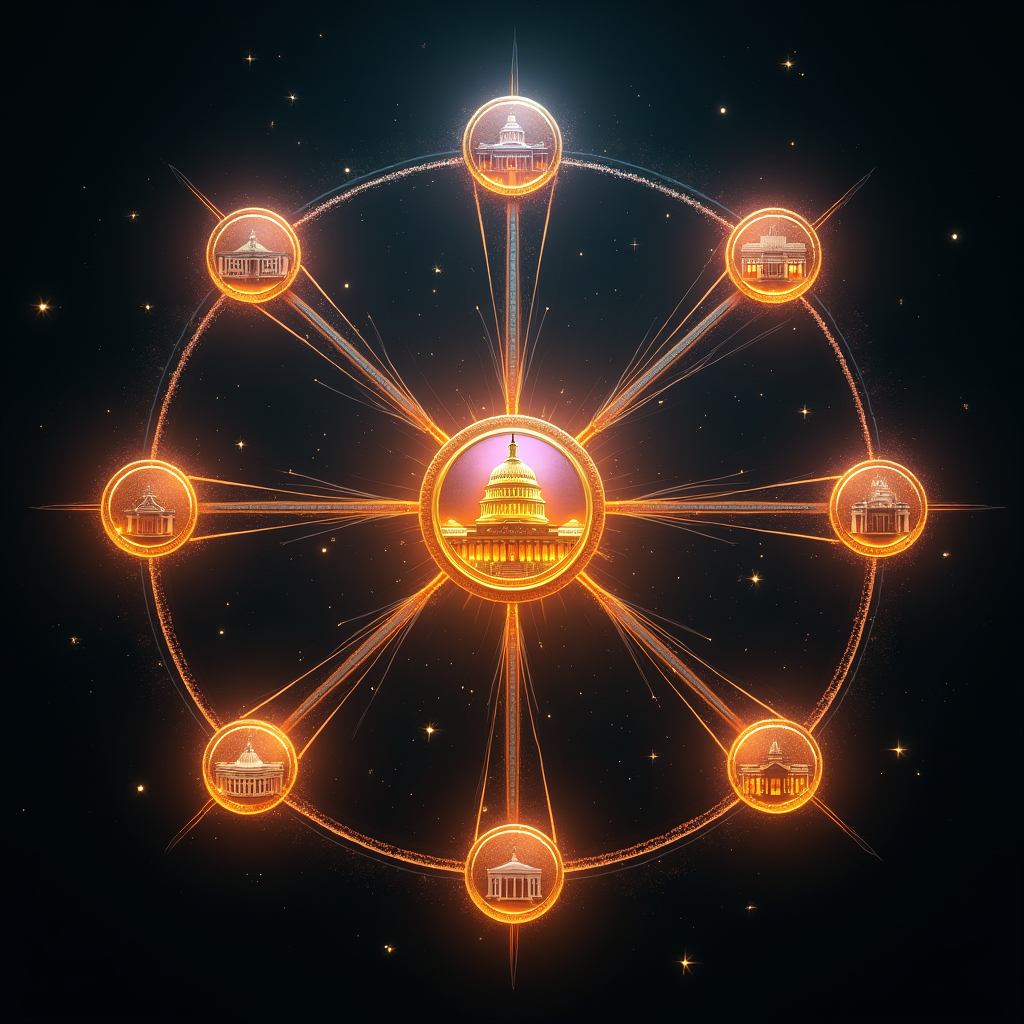
A Constitution is categorised into unitary or federal based on how the government’s powers are divided and the degree of centralisation of powers. In unitary systems, the central government is supreme and all the powers of the lower governments are delegated to them by the central government. In federal systems, on the other hand, there is a clear division of powers between the central government and the lower governments. The central government in a federal system cannot take away the powers of the lower governments. The Indian Constitution designed the Indian political system to be quasi-federal, i.e., there is a clear division of powers between central and state governments, with the Central Government being visibly much more powerful.
Parliamentary and presidential
Most countries in the world either have parliamentary or presidential forms of government, which are decided by their Constitutions. In presidential governments, the executive branch is completely separate from the legislature, whereas in parliamentary governments, the executive branch is connected to the legislature. The Indian Constitution has designed India to have a parliamentary form of government.
Prescriptive and procedural
Constitutions can also be classified into procedural and prescriptive based on nature and purpose. Procedural Constitutions define the legal and political structures of government institutions and set out the limits of the government’s power. This is done to protect democratic processes and fundamental rights. In situations where the Constitution-makers cannot reach a consensus on the values that the State must identify with or work towards, it is better to limit the Constitution to a procedural document. An example of a procedural Constitution is the Canadian Constitution, 1982. The Constitution of Canada does not envision a good society. It merely commits itself to settling disputes and policy issues. Prescriptive Constitutions do not touch upon the concept of nation-building. Prescriptive Constitutions, on the other hand, emphasise the state’s identity and goals. The Constitution-makers envision some common values and aspirations and impose them on the State. The State must consider these values and goals while legislating on socio-economic matters. The South African Constitution, 1996 is an example of a prescriptive Constitution. A Constitution doesn’t need to fit into any single category alone. Many Constitutions have both prescriptive and procedural features. The Indian Constitution seems to contain both prescriptive and procedural elements.
Functions of a Constitution
The following are some of the functions of a Constitution:
Defining boundaries of the political community
A Constitution defines the geographical and extra-territorial boundaries of the nation or state. It can also define and set criteria on who can be called a ‘citizen’ of that nation. It, thus, defines the geographical territory of the nation-state and its control over the land, natural resources, and people.
Furthermore, through the Constitution, the limit of power of the government is established. It defines who is covered by its authority and is subject to its laws and regulations. Here, concepts like citizenship, resident status, and the degree of sovereignty of the state over a specific territory are considered. These parameters as provided for by the Constitution help eliminate territorial disputes as well as produce a clear map of political jurisdictions.
Defining the basic structure of authority of the political community
There are some essential characteristics of the political community, such as the form of government that is set out by its Constitution, that are fundamental to its working. For instance, the Indian Constitution sets out the basic structure on which the Indian political system functions, which constitutes the secular nature of the Constitution, separation of powers, federalism, democracy, a welfare state, etc.
Defining authority of the political community
Most Constitutions also declare on whom the sovereignty of the political community rests. The Indian Constitution, in its Preamble, has declared that the sovereignty of India rests on its people. The role of a Constitution is to play a preliminary role in determining the sovereignty of a political community through providing the formation of governments and the allocation of powers. It defines the structures of government, especially the legislature, the executive and the judiciary, the three arms of government, and their functions.
In addition, it establishes the power basis of the government—from the people, an authorised monarch, or divine providence. It also lays down the conditions under which government actions may be taken and endeavours to curb the discretion of the government and protect the rights of individuals. Due to this, the Constitution eliminates the ambiguity in the structure in terms of authority, hence leading to responsibility, visibility, and order.
Defining ideals of the political community
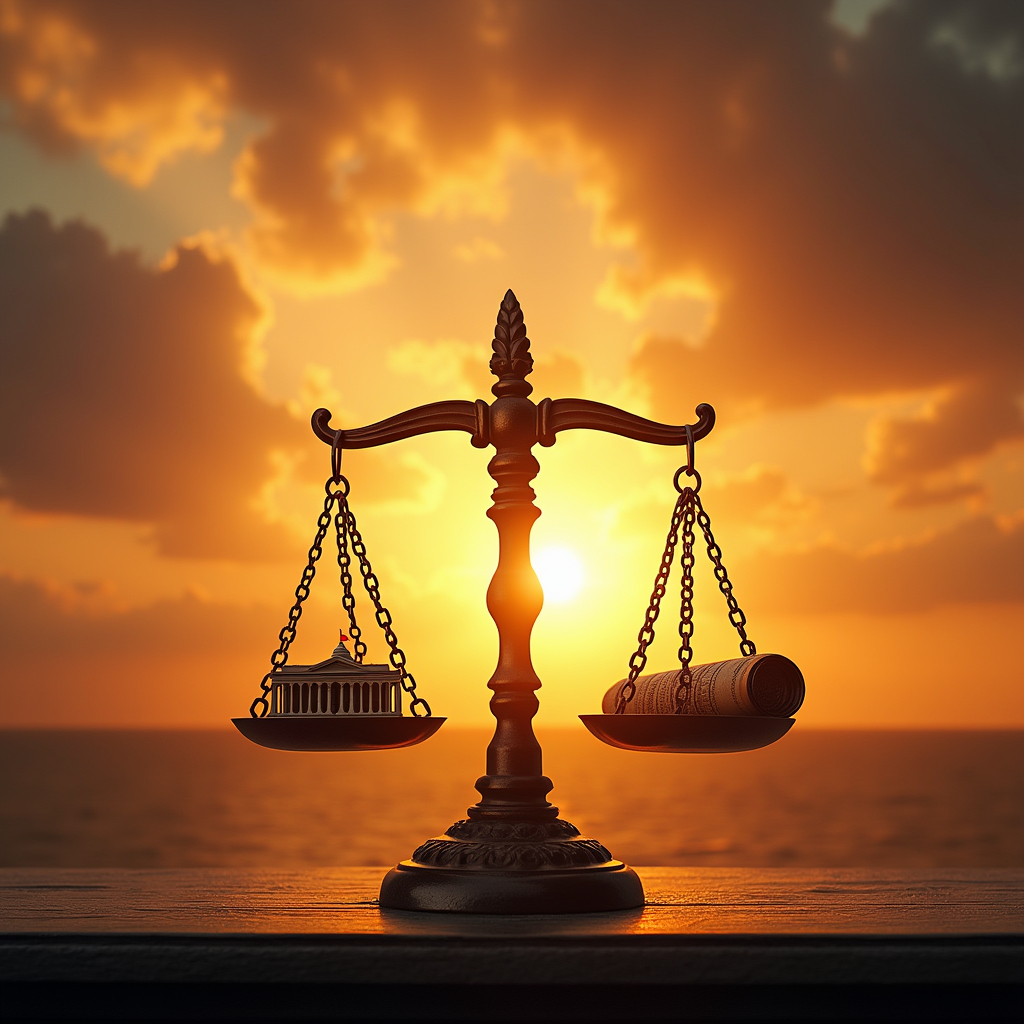
There are certain ideals that the Constitution makers of a political community aspire for their land, such as justice, equality, fairness, etc., which are declared in the Constitution. For example, the basic principles declared in the Indian Constitution are secularism, socialism, equality, etc. A Constitution represents the ideals, goals, and principles of a political society. Proclaimed as a constitutional law, it is the primary legal code that describes the basis on which the state progresses. These are usually based on the nation’s history, culture, and philosophy.
For instance, a Constitution may provide for liberal democracy, human rights, justice, and the rule of law. It can also be used to further specific social and economic objectives, as in welfare, the environment, or gender issues. Thus, by identifying these common values, the Constitution helps to establish unity of purpose among the citizenry.
Defining the identity of the political community
Some Constitutions may also define the national flag, anthem, emblem, and symbols that represent the nation-state. Since it is a fundamental document of a political society, the role of a Constitution is to establish and maintain the identity of that society. It is an embodiment of the character, values, and of the nation and its people. In this respect, the Constitution plays a crucial role in establishing the history of the nation, an appreciation of cultural heritage, and a sense of nationhood among the citizens.
Additionally, it can positively respond to various forms of diversity within the nation, thus supporting multicultural policies. For instance, it might recognise indigenous people and their rights, language minorities, or religious communities, thus adding many layers to the nation’s identity.
Declaring and defining the rights and duties of the citizens
Most Constitutions declare certain fundamental rights that are available for the citizens of the country. These are drafted to restrain the power that the State has over its subjects and its responsibility to protect their dignity as individuals. Generally, they are basic liberties that are essential in a democracy. For instance, freedom of speech, freedom of religion, right to life, etc. Some Constitutions have even declared rights that are specific to marginalised communities. Part III of the Indian Constitution declares and defines the fundamental rights guaranteed to all the citizens in India.
Establishing and regulating political institutions
Constitutions define the different organs of the government, their composition, their powers, the relationship amongst them, etc. It designs the legislature, the executive, and the judiciary, and how they should operate. There can also be institutions that ensure free and fair elections, transparency of the government, etc. It could also provide for elections and the impeachment of those in power and their procedures.
Deciding on the division of powers between different levels of government
Constitutions design the form of government to be either unitary or federal. Many Constitutions have declared their forms of government as federal or quasi-federal. In such political systems, it is necessary to have a fixed list of subjects for each level of government, so that the political system is stable and the central government does not overshadow the lower levels of the government.
Declaring the State’s relationship with religion
Most Constitutions declare their nation-states as secular or as associated with a particular religion. The Indian Constitution has declared India to be a secular country. That is, the State does not favour any religion. In theocratic states, religious law decides on personal status and disputes between individuals.
Declaring the State’s commitment to certain socio-economic goals
The Constitution-makers may also include certain developmental goals for the State to work towards for the welfare of its people. Part IV of the Indian Constitution contains the Directive Principles of State Policy, which essentially aims at ensuring that the people of India receive socio-economic justice.
Why do we need a Constitution
The following are some of the reasons why it is good to have a Constitution:
Preventing despotism
A Constitution gives a foundational structure for its political community. It decides what form of government it should follow and its roles in the political community, along with the limitations on its authority. This helps in preventing the government from acting arbitrarily. This would prevent those in power from getting too powerful and oppressive. Constitutionalism is the opposite of despotism. Despotic governments are governments that are not bound by any higher law or a constitution. Such governments govern with the intent of securing their selfish interests, even at the cost of the basic human rights of their subjects.
Balanced government
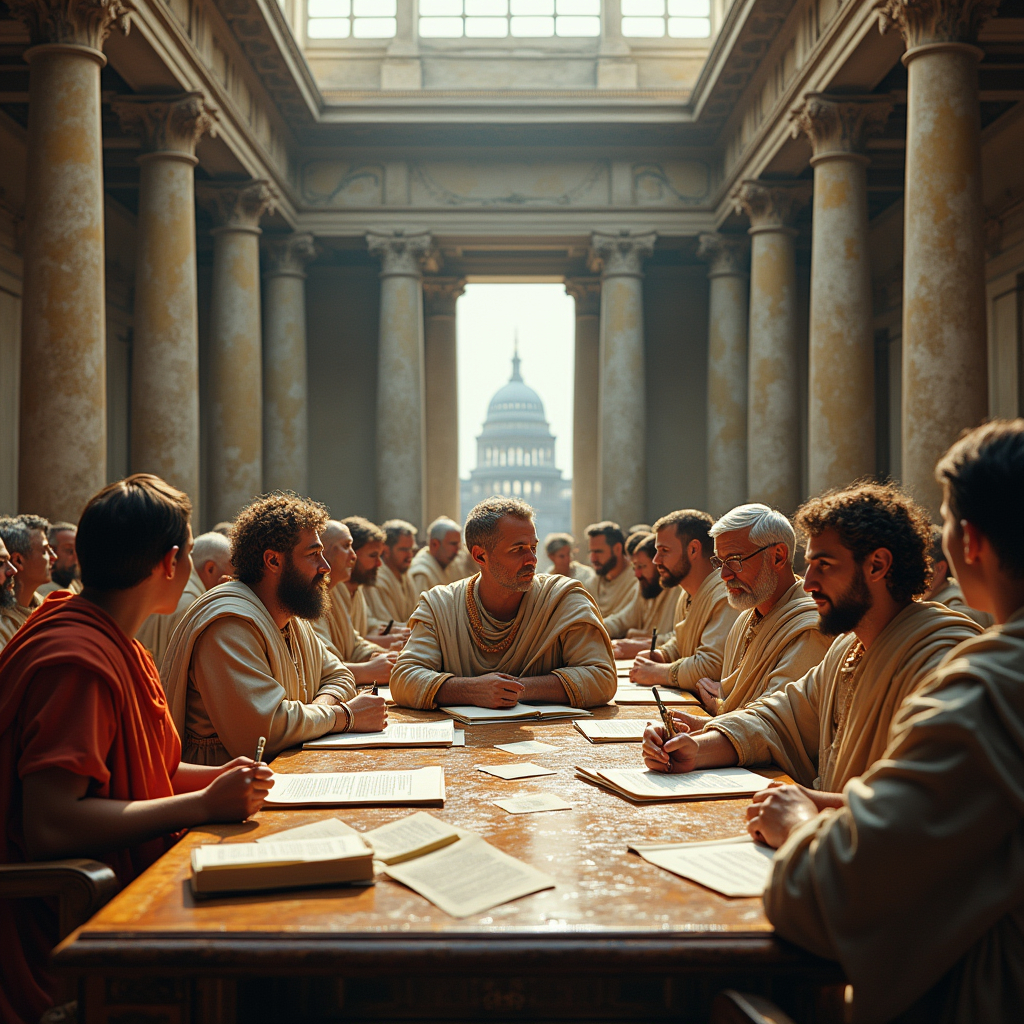
A Constitution helps in separating and distributing power or authority among the institutions of the government. It ensures that all these institutions are restricted in their power and also check and restrain each other. This prevents the domination of any institution over others. It prevents the exercising of unchecked political power.
Constitution as a social instrument
Another crucial purpose of a Constitution is to provide a framework for socio-economic development. Many Constitutions across the world, particularly the Indian Constitution, have been significant in ensuring that marginalised groups receive equality and justice. The Directive Principles of State Policy in Part IV of the Indian Constitution have motivated the government to create laws that serve as instruments for protecting the environment, upholding labour rights, promoting free access to education for children, etc.
Stable government and protecting sovereignty
Since a Constitution serves the purpose of setting the social and political basis for a political community, it ensures political stability and keeps the community’s sovereignty intact. If a nation does not have a strong political structure, it is more vulnerable to the attacks of external powers. Thus, political communities that do not practise constitutionalism are more likely to crumble.
Upholding human rights and democratic values
Constitutions are of great importance in the modern democratic world. The Constitutions in many democratic nation-states serve the purpose of ensuring that the procedure of selecting those in power is uncorrupt and fair. It also grants people their right to vote and the freedom to express their criticism of those in power. Elections, representative government, and the right to criticise those in power are the fundamental characteristics of a democratic society. Constitutions also serve the purpose of guaranteeing the fundamental human rights of citizens. This is essential to ensure that the government does not function in a way that compromises the interests of its subjects.
Role of the Constitution in protecting individual rights
The Constitution remains the foundation on which the government protects people’s civil liberties. This important role is underlined in the United Nations Development Programme (UNDP) document entitled “Protecting Human Rights in Constitutions”. Constitutions typically achieve this protection in several ways:
Socio-Economic rights
These are the rights that are based on one’s dignity and value as a human person. Different Constitutions include the freedoms of receiving education, medical treatments, shelter, and a decent living. While some may be legal to be implemented in some countries but not in others, nevertheless, their inclusion shows a state’s preparedness and capacities to protect and promote social justice. For instance, the provisions of the Indian Constitution have provided for the Directive Principles of State Policy for these rights, although they are not justifiable.
Environmental rights
This link between human rights and environmental rights has been very popular in the recent past, so many Constitutions have addressed non-environmental rights. Some of these rights include the right to clean water and a sanitised atmosphere, the right to equal access to information on the environment, and the right to access the environment and have his or her input considered. In this respect, the Constitutions help advance sustainable development as well as the concept of intergenerational responsibility.
Minority rights
- Cultural and educational rights: Minors’ rights may be enhanced through the Constitution based on culture, worship, and use of language. This may consist of the right to education in the minority language, the right to access establishments and schools, the right to have religious celebrations, and the right to establish ethical organisations. (Example, Article 29 and Article 30 of the Indian Constitution).
- Political participation: Although equality and protection of human rights are a universal right, some Constitutions request state affirmative action so that minorities are given sufficient representation in the government. This could mean that there will be a separate bench in parliament for the minority or an acceptable quota of minorities in the civil service.
Women’s rights
- Equality before law: The Constitution can entitle women to equal rights with men in every way; this is in political activism, in owning property, and even in the issue of succession. This undermines the legal frameworks that have historically conferred superiority to men.
- Non-discrimination: Constitutions can outlaw discrimination based on sex so that people get equal treatment in education, jobs, and access to health services.
- Reproductive rights: Some progressive Constitutions should recognise women’s right to control their bodily integrity and reproductive decisions.
Indigenous peoples’ rights
- Land rights: Since Constitutions acknowledge indigenous peoples’ rights to their territories, the latter may be protected from alienation or may be granted ownership or use rights to the land. This shields them from forced eviction and resource depletion.
- Cultural preservation: Constitutions can also recognise and safeguard indigenous people’s cultural rights, including their cultures, languages, and knowledge systems. This may encompass the conditions for the protection of cultural property, such as the sacred grounds of the native communities or provisions on the usage of their native languages in schools.
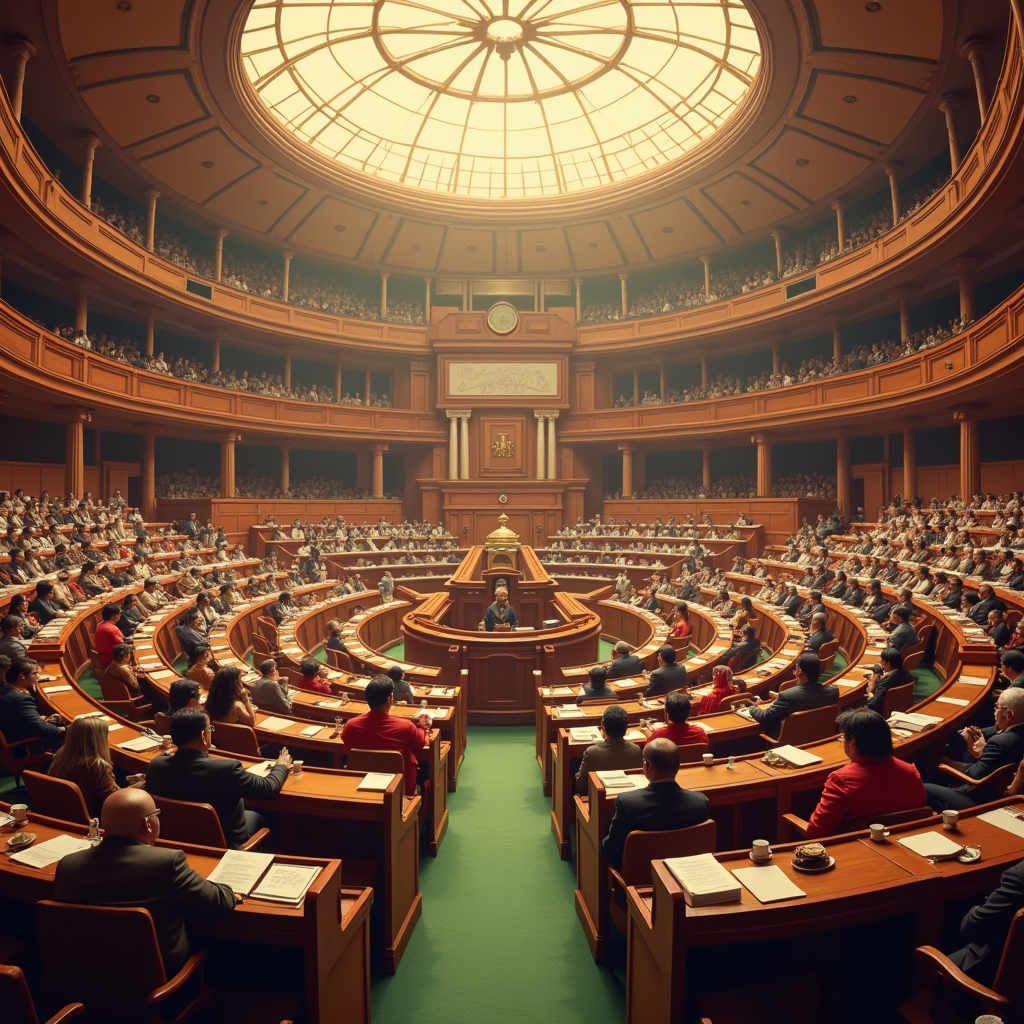
Rights of persons with disabilities
- Accessibility: Promoting the general welfare since the Constitution may require that structures that are easily accessible should be established for the benefit of the disabled, so they can be able to participate in society.
- Reasonable accommodation: Institutional and organisational policies and legal policies may compel employers and institutions to make accommodations for those with disabilities and end the exclusion of such individuals from education and/or jobs.
- Anti-discrimination: As in other groups, Constitutions can bar discrimination of disability in the workplace, education, and access to social services.
National unity and integrity
Constitutions can be described as the core legal documents that define the unity and integrity of the countries. In this respect, they help the communities define the ways of governance, share the power, and protect individuals’ rights as a universal guide for these societies. From the codified principles of the French Constitution to the evolutionary framework of the British Constitution, these documents provide a common vision for the people; this way, they build a nation. Based on the US Constitution, we can illustrate how the Constitution should be written, taking into consideration both the federalism principles as well as the national sovereignty. India’s Constitution being a secular one and which fares strongly on values of social justice is a good example to demonstrate how a Constitution can allow for cultural and religious diversity while encouraging assimilation. However, the issues of economic disparity as well as disparities across the regions are still present. Constitutions act as a guide on how such issues are to be tackled through institutionalised means of governance, countering argument(s)/dispute, and provision for social well-being. Finally, Constitutions are not set for eternity as societies are dynamic; they are works in progress that are remodelled in due time to embrace the progress of the nation as well as mirror the nation’s vision of unity, justice, and progress.
Comparative analysis of different constitutional systems
Federalism
Federalism is a principle of government where ultimate power vests in the central authority, which is responsible for the administration of the country, while the other sources of authority are constituted states. Federalism is considered to be the most prominently represented by the United States of America. Decentralised powers are clearly stated in the Constitution between the federal government and the state governments. These include a federal system of government in which the Senate is based on states’ equality while the House of Representatives is based on population. The Tenth Amendment in the Bill of Rights provides that any powers not hence expounded or given to the Federal authority revert to the states or the people. Thus, this system is effective in balancing the power relations within the country as well as within the regions.
India is another notable federal country, although the country leans more towards cooperative federalism. The Constitution provides a highly centralised government with broad powers while at the same time acknowledging the principle of state rights, especially in such areas as criminal justice, farming, and schooling. Indian federal structure enjoys a feature of cooperative federalism as well as competitive federalism because of the distribution of powers between the centre and the states.
Germany offers an interesting case of federalism that relies primarily on cooperative federalism. This means the powers are distributed between the federal government and the Länder (state). While the ultimate powers are vested with the federal government, it is crucial to understand that the Länder (state) states also have significant autonomy in many areas. Nevertheless, one must state that the Länder has a large amount of independence in many policy fields. Germany has a bicameral parliament in which the second house, known as the Bundesrat, is representative of the Länder/states and holds a key position in the decision-making process.
The United States offers an example of a country that has a highly developed focus on state rights alongside a central government, while India can be described as a country with powerful central authorities and references to the states as cooperative. Germany, for its part, develops the principles of both federal and unitary systems but, at the same time, contributes to the cooperation. These nations differ not just in the level of centralisation, the position of the second chamber, fiscal relations, and the state of exceptional measures. Comparing the structure of political systems, the US is closer to the model of dual polity; however, India and Germany are more centralised. Even in these different federal systems, the distribution of financial resources as well as the degree of centralised control during crises differ.
Parliamentary system
The parliamentary system involves a strong relationship between the legislative and the executive branches of the government. While, in presidential systems, the branches of the government are distinct and separate, parliamentary systems combine certain elements of all of them. The head of government, usually a Prime Minister, is a member of the legislative branch and is appointed based on the votes within the parliament. This system is common in the United Kingdom, Canada, India, Australia and New Zealand.
The United Kingdom, which is associated with the origin of the parliamentary system, has a constitutional monarchy in which the monarch acts as the head of state without much power. The Head of Government is the Prime Minister, who is in turn the head of the party with the most seats in the House of Commons. Canada is a federal parliamentary democracy and while it has many similarities to the UK, it is largely characterised by provincial autonomy with relatively more powers delegated than in the latter. India is the largest democracy in the world that runs the parliamentary system that amalgamated some features of the Westminster model with the federal system. Another country with strong Britain roots as well as a parliamentary federal system is Australia; New Zealand also has strong Britain links but demonstrates the unitary system with much attention to social policies.

These nations, while sharing the core principles of parliamentary democracy, exhibit variations in terms of federalism, constitutional structures, and the role of the monarch or president. These differences reflect the unique historical, cultural, and political contexts of each country.
Semi-presidential system
Semi-presidential system can be defined as a system of government where features of both presidential and parliamentary systems are observed. This political system has a president who is directly elected and shares power with the Prime Minister and the cabinet, as well as other organs of government that are responsible to the legislature. This system of dual executives can create complications in the distribution of power and shifts in the power relations between the president and the Prime Minister.
Some of the nations that apply a semi-presidential system include France, Russia, Poland, and Romania, among others. The French model, which is often used for discussion, gives the president rather vast powers, among which there is the right to dissolve the parliament. But the Prime Minister, as the chief of the executive branch, is involved in day-to-day administrative functions and requires the confidence of the legislative arm. This relationship of sharing the same executive branch by the president and Prime Minister can cause forming different parties, hence may cause problems in governing the nation.
Unitary system
Unitarism refers to that type of governance where political authority is exercised by the central government only. It refers to those nations that have distributed some of their authority to regional or local governments but the central control remains superior. In the unitary system, most of the policies are under the jurisdiction of the central government and these encompass defence policies, foreign policies, economic policies, and police or law enforcement policies.
Decentralised unitary states include the United Kingdom, France, Japan, and China. These nations might be divided into prefectures, provinces, or departments, but they are subnational, and therefore their structure and jurisdiction can be changed or removed by the central government. One may consider unitary systems as beneficial for the coordinating effect and the policy uniformity but at the same time, they may not be as favourable for the regions’ requirements and demands.
Separation of Powers
Originally, the principle is an essential part of numerous modern Constitutions; it is an effort to avoid power concentration in one governmental branch. It requires that the functions of government be separated into different branches, each of which has its own powers and jurisdiction. Usually, they include the branches of a parliament, which are the legislative, executive, and judicial branches.
The United States of America remains a classic example in this respect, an element of their Constitution. The executive branch of government is the presidency, while the judiciary branch of government is made up of the Supreme Court and other lower courts. The leaders of this branch of the government are the President, with the role of enforcing laws and conducting foreign affairs. The judiciary, which is headed by the Supreme Court, applies and interprets the laws and resolves legal matters. This division also makes it impossible for any particular branch of the government to dominate the other two since the system of checks and balances is inherent.
What can be observed is that the United States gives a vivid example of the separation of powers; however, the degree to which this principle will be implemented is also measured in different countries at different times. Therefore, even in France, which is a semi-presidential republic, the relationship between the president and the head of government, the Prime Minister, involves a lot of sharing of powers. In parliamentary systems like the UK and Canada, the government emanates from the legislative branch, making it hard to entirely separate the executive from the legislative branch.

India, Brazil, and Germany, like many federal systems, have adopted a dual structure of power distribution. The structure of Indian governance is federal, which complicates the consideration of the division of power even at the stage of the analysis of the sphere of separation of power: it is necessary to use and determine the distribution of power between the central government and the state. In this respect, it is quite extraordinary that the political process of Brazil has been influenced by the United States so much. Brazil has quite a severe system of checks and balances, while Germany, being a parliamentary country, seems to have a rather more liberal approach to the concept of separation of powers.
Amendment process
The amendment process relates to the procedure of changing a Constitution. It is one of the structural elements of any nation’s governance system; hence, it deals with addressing aspects of stability but efficiency in responding to dynamic contexts.
Referring to amendments, Constitutions can be distinguished concerning the degree of openness of the amendment regulation. Strong constitutions take lengthy procedures, which in most cases involve a two-thirds majority in the legislative organ or via a popular vote. The process of the amendment differs a lot between countries; for instance, it is nearly impossible in the United States of America. This means that the Constitution is a framework document that cannot afford to be changed at short intervals.
Thus, as mentioned beforehand, flexible constitutions enable amendments due to the means of ordinary legislation and therefore are more versatile. The United Kingdom, being a common law country, has an uncodified constitution and therefore, the rules of its constitution can be changed by an act of Parliament. On the one hand, this opens the possibility for change to be made and the Constitution to be adapted to the current context; on the other hand, it creates the grounds for weakening the key constitutional tenets.
Between these two poles, there are a number of the so-called intermediate systems containing elements of both the rigid and the flexible systems. India for example, has a constitution with numerous provisions for amendment, which include simple majority, special majority, and those that require state ratification. This approach aims at achieving the stability that is required while at the same time possessing the ability to change.

Judicial review
Judicial review is the act of a court to decide on the validity of a law, and political acts and decisions. It plays the oversight role to the legislative and even the executive branch to see to it that they act within the provisions of the Constitution.
The United States is therefore often accredited for the concept of judicial review. Marbury vs. Madison (1803) is the case in which the Supreme Court won its authority to declare certain laws unconstitutional. This power has somewhat marked the growth of American constitutional law.
However, the level of this constitutional measure called judicial review, though exists to some degree in most nations including the United States, does not necessarily have to be as extensive in other countries. Some nations’ judiciaries are empowered with broad competence for examining legislative and executive conduct, whereas, in other nations, capabilities for judicial review are restrained. For example, the UK legal system is still reputed to have parliamentary sovereignty and as such, has always been known to have a less stringent form of judicial check. Nonetheless, the reception of the European Union law has caused an expansion of the degrees of judicial review in the United Kingdom to some extent.
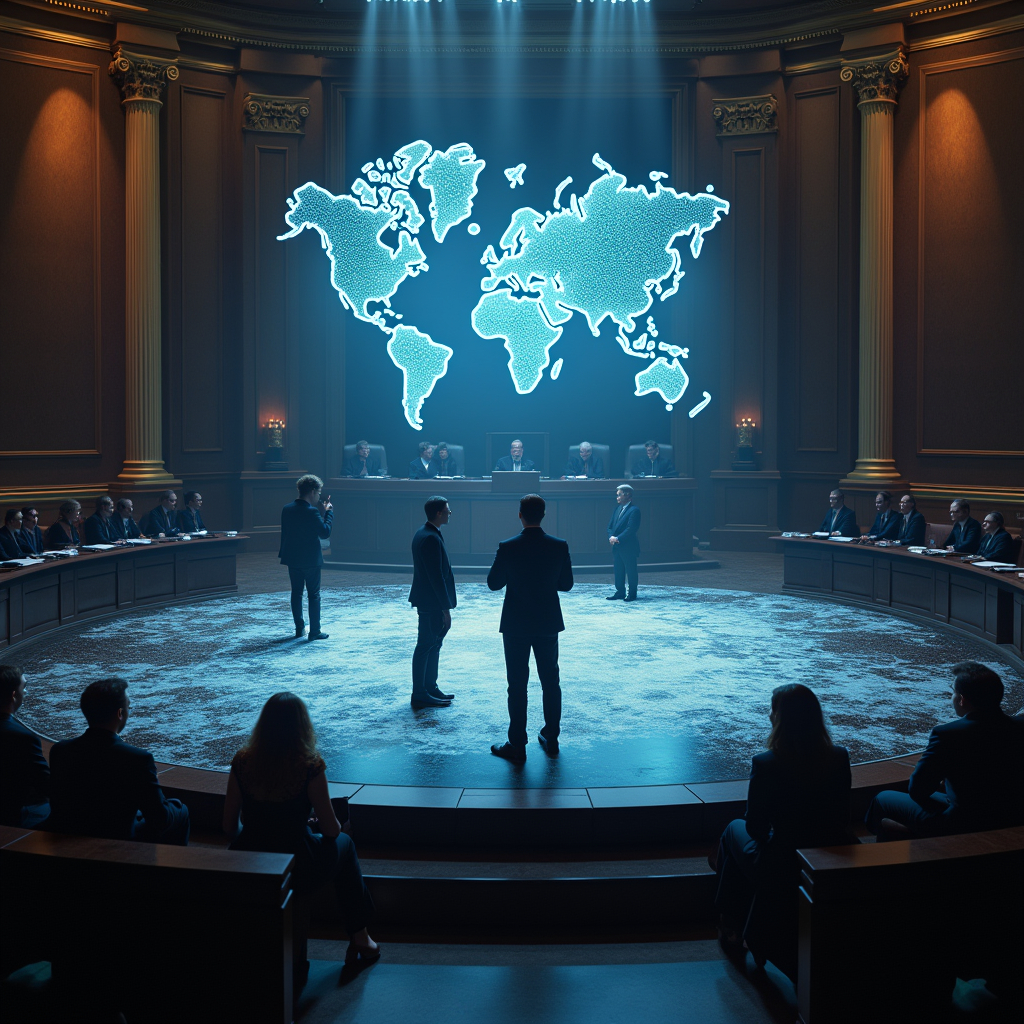
Delivering justice to the vast population, India has social justice along with a strong Judiciary enjoying the power of judicial review. The Indian Supreme Court has been central in the defence of fundamental rights as well as the implementation of the Constitution. However, the balance between the judiciary and the other arms of government has remained contentious, especially in the United States of America.
However, it should also be pointed out that the use of judicial review has its critics. Critics claim that it grants too much power to the representatives of the judiciary, who can repeal the decisions of the people’s deputies. Some people argue that it is needed as protection against encroachment by the central government. This is always a rather delicate question: how much legislative authority should be limited by the judiciary over-concentration is another crucial topic that defines constitutional law and governmental systems globally.
Constitution as a living document
The Constitution could refer to a system of rules, laws, or legal proceedings governing a particular state or country, but here the word carries more than that; it defines the framework of a society and constitutes a document that evolves with the society it serves. It describes the idea of the document as a living one, thereby emphasising the issue of development and learning within the framework of constant changes in socio-political and economic landscapes.
Therefore, because of the mentioned factors, the Constitution can be regarded as possessing a living character. To begin with, it is important to note that the overall assessment of values, norms and expectations among the members of a society are ever-evolving. A rigid Constitution is suitable for setting out what is necessary to maintain a general framework that may not work well to support changes in a society’s needs. Second, there may be new circumstances, such as technological, global, or other situations that are unprecedented in society, or we may need to formulate a new constitution to address such situations.
Indeed, as a part of the common law system, the judiciary also plays the role of interpreting the Constitution and therefore impacts the content of the Constitution in this way. Hence, by interpreting the Constitution about current events, the judiciary alters the Constitution without the express permission of the legislative branch on the mode of amendment. This interplay between the judiciary and the constitution ensures that this document applying this work as a source of law operates in a dynamic society.
Then there is the theory of a living Constitution, which asserts the fact that societies are not static entities. The requirements for the Constitution that should be democratically enacted need to be sufficiently liberal to address the needs of future generations. This indicates relative freedom, which allows the document to expand without losing those fundamental ideas.
Thus, a Constitution is not just a piece of paper given only for a period of time but a living document learning and growing with society. This dynamism requires the Constitution to remain effective in the performance of the tasks over the roles in the evolving society.
How technology can affect the Constitution
The challenge of originalism in a digital age
Originalism is a type of constitutional interpretation that aims to return to the meaning that the Constitution had at the time it was written. However, new challenges and situations emerged as a result of the fast rate of development in technology. This is a major problem when it comes to how originalist jurisprudence should approach issues such as freedom of speech on the internet, privacy in the digital age, and regulation of artificial intelligence.
Judicial discretion and changing norms
Ever-evolving tolerance is one of the legal theories that need to be used concerning the Constitution. Despite the advantages of using this approach to address and adapt to contemporary situations, critics argue that the approach has issues of bias and judicial activism. Thus, it is critical to adequately establish guidelines concerning occasions and methods of applying the use of emerging standards in light of technology to preserve the Constitution’s sanctity.
The need for long-term constitutional principles
The Constitution is intended to remain the governing framework of the nation across generations. With the rapid advancement in the use of technology in society, it becomes pertinent to discover the basic constitutional values as applied to modern society. Thus, concentrating on such general guidelines, a wide variety of courts might outline the approach to handling the Constitution that will be consistent with the framers’ intentions and perspective.
Privacy issues in the modern world
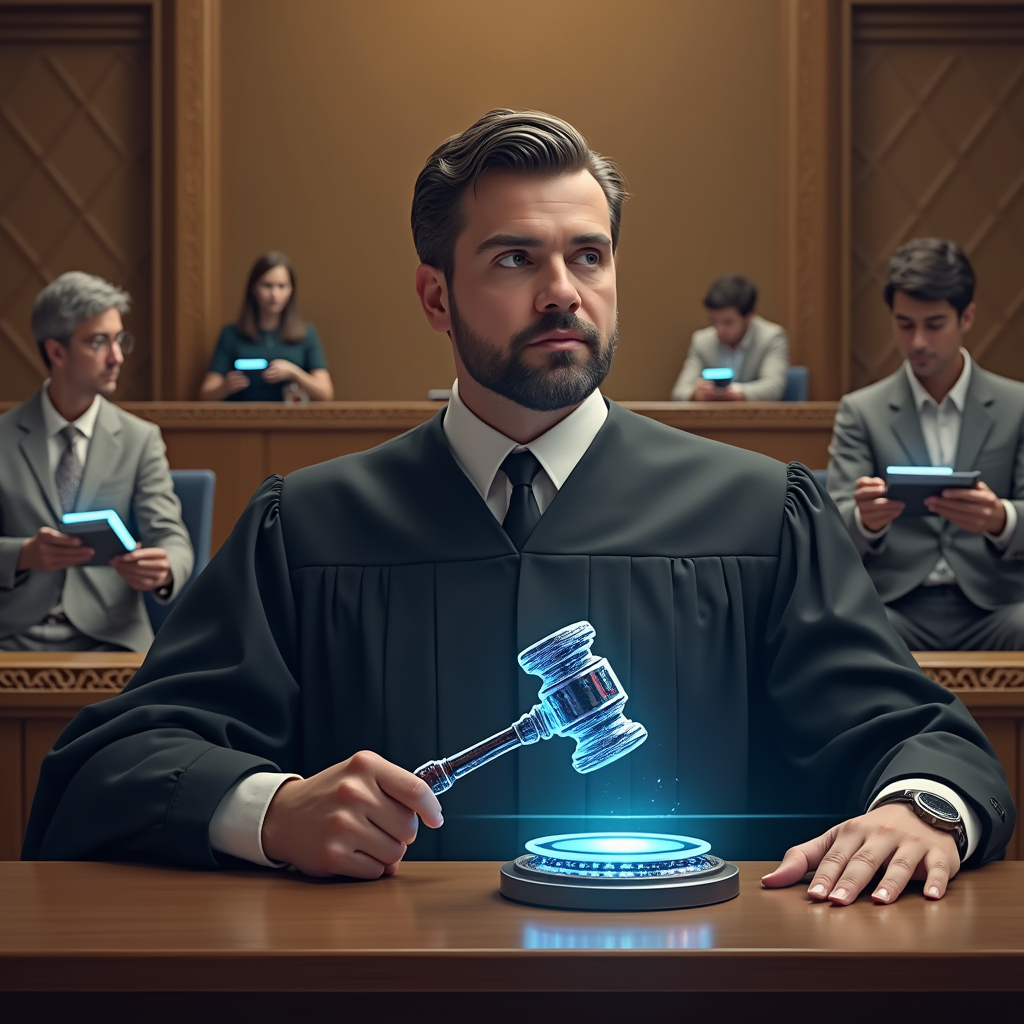
Improvement in technologies used in surveillance and data collection has remained a core issue in the issue of personal privacy. Protection of public interest and privacy are two major concerns in modern society: giving the government authority to investigate private citizens’ matters is crucial for public safety, but it poses a threat to personal sovereignty in the digital age.
Cyber liberty and its controlling principles
This phenomenon can be largely attributed to social media platforms, which have done much to change the current trends of public discourse. Some constitutional issues in this area include whether the government can control the use of these platforms and the extent to which it can promote the protection of free speech. Liberal values such as freedom of speech, when applied to modern technology, need to be considered depending on each issue, such as fake news, racism, abuse, etc.
Artificial intelligence and constitutional implications
The creation of artificial intelligence more radically challenges the well-thought-out structures of the workforce, economy, and society. Constant advancements in the systems raise the question of how they will influence the constitutional rights of individuals in every nation. Concerns over algorithms being decision-makers or decision-aids, the use of autonomous weapons, and AI entities’ recognition under the law present new legal and constitutional challenges.
Critical analysis
The Constitution constitutes the framework of democracy in as much as it outlines the limits of the power of the government and protects the freedom of the people. It ascertains legal prerogatives to curb hasty decisions and actions by the rulers that are normally presumptuous. Some rights are contained in the Constitution, and they include socio-economic, environmental, and minority rights, which depict a nation’s zeal for social justice. For instance, environmental rights within the Constitution emphasise the issue of sustainable utilisation and those for future generations.
Guarantees of minority rights include cultural and educational rights that enhance the protection of minorities as well as sustainable democratic initiatives. Various provisions concerning women’s rights, constitutionalised, seek to eliminate gender discrimination and empower females, and provisions concerning the indigenous people try to protect their land and cultural functioning as well. Persons with disabilities rights help in the realisation of their needs and integration into society without discrimination.
Constitutions also define ruling systems given that there are federal systems that divide power between the central and state governments and unitary systems, although they concentrate power at the centre of states. The principle of separation of powers, which is illustrated by the United States, is meant to avoid absolute power by defining the line of work of the legislative, the executive arm, and the judiciary branch. Judicial review also plays another role in ensuring that laws passed by the legislature are in line with the Constitution; hence, we have constitutional supremacy and protection of rights.
More to the point, the idea of the Constitution being a ‘living’ document is pivotal to change. In this respect, judicial interpretation has a very critical role in ensuring that constitutions can adapt within such facets of change to make them relevant within change-oriented societies. This flexibility only speaks volumes for the relevance of the Constitution today, in the protection of rights and in government.
Conclusion
The provision of the Constitution is also very important in any modern democratic state to ensure that the principles of democracy are upheld in any instance. Through Constitutions, there is a declaration of the government’s power and the division and distribution of power among different arms of the government, as well as the formation of a stable government. They are the leaders of socio-economic development and the realisation and facilitation of individuals’ rights. Therefore, besides the legal acts, the Constitutions are the documents of the social contract specifying the people’s expectations in a given society. They provide ways of challenging the injustice and being oppressed, hence creating a feeling of security and belief in government. Thus, holding all actions of the government, Constitutions protect the legal base and people’s rights.
Moreover, one has to bear in mind that the concept of a Constitution is not a concept of a paper document that cannot be altered but of an effective document that can be changed in the given circumstances, introducing changes since it is intended to respond to the requirements of the society where it has been implemented. This is important and renders them relevant and capable of steering the nations through social, economic, and political changes. Thus, it seems quite logical to conclude that the Constitution is one of the most significant instruments to create a society with rights and freedoms and political and economic equalities for the people aimed at their decent and integrated lives.
Frequently Asked Questions (FAQ’s)
How are individual rights protected in the Constitution?
Constitutions protect liberties by enumerating the constitutional rights that are important liberties of the individual, such as freedom of speech, religion, and assembly. It legalises measures that do not permit discrimination and also arbitrary decisions to be made by the government. For example, where the judicial systems of nations allow for judicial activism, the judiciaries ensure that laws and all actions of the governments are per the Constitution to safeguard people’s liberties.
What exactly do socio-economic rights mean and how can they be protected under the Constitutions?
Socio-economic rights are human rights that concern people’s lives and directly impact their quality of life, such as rights to education, health, housing, and adequate food. These rights are usually written into Constitutions as a way of indicating a state’s adherence to social justice. Although not always practically actionable in all nations, such principles’ adoption demonstrates a state’s desire to adhere to these principles when shaping governmental policies in the field of improving socioeconomic conditions among its population.
In what ways does the Constitution regulate aspects of checks and balances?
It is common in Constitutions to set up checks and balances to ensure that a given arm of government is not dominant. This is attained through the separation of powers of the executive, legislative, and judicial arms of government. In today’s world, it was adopted so that we could have a check and balance system so that every branch of government has the power to check the other branches of the government.
In what way does the judiciary participate in the protection of the Constitution?
Judicial review involves legal scrutiny whereby a court assesses the compatibility of legislation and actions of the government with the Constitution. Thus it checks whether all legislation and administration procedures adhere to constitutionalism. This oversight function assists in the safeguarding of individual rights by nullifying laws and entities’ actions that transgress the Constitution.
In what manner does the incorporation of constitutional amendments depict the constant change of a Constitution?
Constitutional amendments therefore refer to alterations made to the Constitution to adapt to the current face of society. The amendment process here enables the drafting of the Constitution to assume a different aspect while changing times without negating the basic ascribed principles. This process illustrates how the Constitutions stay current and active through updates or revisions, as seen in this process.
References
- https://www.idea.int/sites/default/files/publications/what-is-a-constitution-primer.pdf
- https://www.thehindu.com/opinion/columns/why-we-need-a-constitution/article24361253.ece
- https://www.britannica.com/topic/Greek-law
- https://constitutioncenter.org/education/classroom-resource-library/classroom/perspectives-on-the-constitution-constitutions-around-the-world
- https://www.newyorker.com/magazine/2021/03/29/when-constitutions-took-over-the-world
- https://constitutioncenter.org/education/classroom-resource-library/classroom/perspectives-on-the-constitution-constitutions-around-the-world
- https://timesofindia.indiatimes.com/readersblog/advocateofmountains/the-constitution-of-india-a-living-document-39156/
- https://kellogg.nd.edu/sites/default/files/old_files/documents/200_0.pdf
- Constitutional Amendments – Amendment 10 – “Powers to the States or to the People”
- About the Senate & the U.S. Constitution | Equal State Representation
- The Tenth Amendment – Reserving Power for the States – U.S. Constitution – FindLaw
- https://www.undp.org/sites/g/files/zskgke326/files/2023-10/undp-protecting-human-rights-in-constitutions.pdf
- https://www.newyorker.com/magazine/2021/03/29/when-constitutions-took-over-the-world
Students of Lawsikho courses regularly produce writing assignments and work on practical exercises as a part of their coursework and develop themselves in real-life practical skills.
LawSikho has created a telegram group for exchanging legal knowledge, referrals, and various opportunities. You can click on this link and join:
Follow us on Instagram and subscribe to our YouTube channel for more amazing legal content.
 Serato DJ Crack 2025Serato DJ PRO Crack
Serato DJ Crack 2025Serato DJ PRO Crack


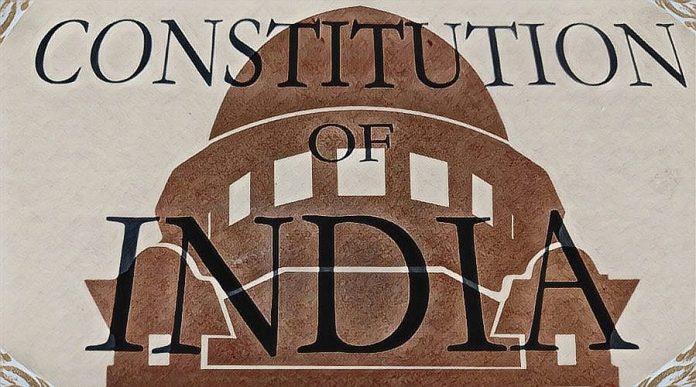







 Allow notifications
Allow notifications



